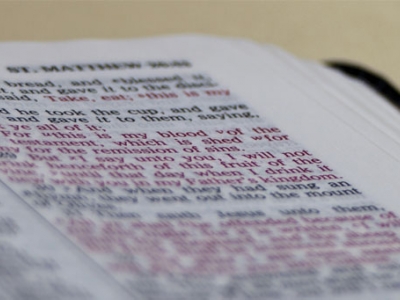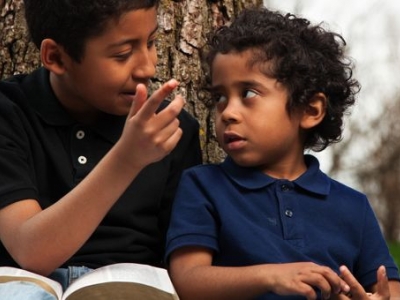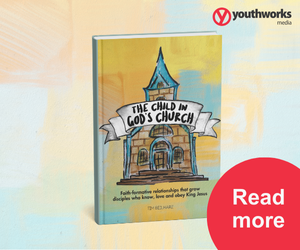
How to teach the Old Testament to children
Ten insights into how to help kids better understand God's Word.
The following is a brief summary from a series of short talks presented by Kirk Patston and Kit Barker (Lecturer in Old Testament) at the Sydney Missionary and Bible College Children’s Workers Conference.
Tip 1: Don’t teach the OT to children
Coming from a lecturer in OT this might seem like a strange place to start! There are two occasions when this tip should be applied, when either a) the genre or b) the content is inappropriate.
While some genres themselves don’t work with children, across all the genres there is content that simply isn’t appropriate for them. From graphic violence, to sexual metaphor and misconduct, the OT is full of stories that shouldn’t be taught to young children.
Samson is a great example of a story rarely missing from children’s bibles and Sunday school curriculum, yet this story is one of the least appropriate. Far from the “model of faith” that most studies portray him to be, Samson is the quintessential narcissist, disrespectful of his parents, a womaniser, and ultimately consumed by personal vengeance. To tell this story well, we need to let it speak in all its graphic detail and understand that Samson is not a model of righteousness, but a picture of adulterous, idolatrous and ambivalent Israel. While this may be a great story for teenagers, teaching a sanitized version to primary age children is not actually teaching the OT at all. This leads me to the second point …
Tip 2: Teach the OT to children
It’s clearly important that children are exposed to as much of the OT as possible, but let’s make sure we are teaching the OT and not something else. For example, teaching the Samson narrative, but omitting the sexual and more violent elements and portraying him as a model for us to follow is not teaching the OT. That is simply using some parts of a sanitised biblical story to tell an entirely different story. Our teaching of the OT to children is vitally important and we need to be committed to teaching the actual OT and not something else.
Here are some tips related to different genres:
Tip 4: Teach narratives canonically
We all love a good story and the OT is full of them. Locating the story within the larger narrative of the book, and the even larger plan of redemption is always helpful for both children and adults in allowing us to understand its message.
Tip 3: Teach narratives typologically
This recognises that events and characters in the text can represent both earlier and later events and characters. Clear, biblically demonstrated connections between these “types” needs to be made so that we avoid allegorical readings of the text.
Tip 5: Teach narratives ethically
Understanding how the characters are being portrayed (heros or villains) and how they have reacted to living in God’s world is a good place to start. Jumping straight to typological readings (e.g. what does this story tell us about Jesus?) misses much of what the biblical narratives are doing (e.g. challenging our own response to living in God’s kingdom).
Tip 6: Teach law legally
The main challenges here are that we either overplay the limits of the law (e.g. “we can’t do it, but Jesus can”) or we simply fall into legalism by not explaining why the law exists. Connecting the law to examples in the biblical narrative will help children understand why these laws matter to God. Connecting the law to the narrative of redemption will help children begin to understand obedience as a response to grace.
Tip 7: Teach apocalyptic with vision
Apocalyptic literature is full of strange and vivid images, of beasts and dragons and fire and lightening. For children who are a little older, these scenes are familiar (Pokemon, Ben-10, Beyblade, etc.) and can be a helpful way of drawing them into biblical worldview.
Tip 8: Teach wisdom wisely
Proverbial literature and much of the wisdom literature is usually too difficult for young children who cannot make sense of the abstraction, and cannot understand its nuance as they think in more concrete and absolute categories. This is more suited to young teens who can discuss how and when the proverbs “work”. We will teach wisdom to young children by how we live.
Tip 9: Memorize, model and imagine the Psalms
Theologically rich and concise, rhythmic and vivid, the Psalms are designed to be memorised. By memorising a whole Psalm, the verses also have the advantage of being understood in context (a common problem with taking memory verses from didactic or prophet literature). Psalms are also designed to be prayed and sung and offer the teacher an opportunity to model this in the classroom. Furthermore, the Psalms are rich in imagery that provides great potential for various kinds of craft. Connecting the craft to a biblical metaphor and hence its message is a much more powerful tool than connecting it to a prop in a narrative scene.
Tip 10: Teach the prophets prophetically
The prophets also offer a common point of connection with children who are used to the archetypes present in them. The figure of the prophet is set against the established institution whose have abused their position of power. These themes resonate throughout much of the fictional (and non-fictional!) film and literature that we all enjoy. Noting these parallels can help the children see the drama of the narrative and understand its message.
Teaching the OT to children is a great responsibility. I hope that you will feel some freedom in your teaching to make your own curriculum decisions. The task need not be more challenging than it already is.
For more articles from Growing Faith, subscribe to our monthly e-newsletter.
To hear about the latest books and resources from Youthworks Media, subscribe here.







